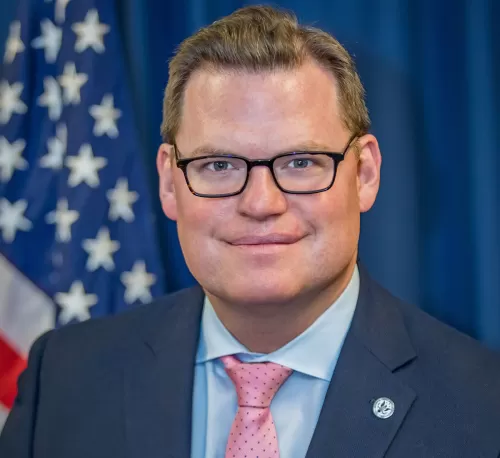NCUA Vice Chairman Kyle S. Hauptman
As Prepared for Delivery on November 18, 2021
Thank you, Elizabeth for your presentation.
I do not dispute the claim that permitting shared locations to qualify as service facilities will assist multiple common-bond federal credit unions in expanding into underserved areas. However, that situation already exists under the current rule and has for some time now. Under the existing rule, only federal credit unions with the resources to invest in a shared branching network can utilize it for expansion. Federal credit unions with fewer resources or an inability to have an ownership interest in a shared branch network have been prevented from expanding in underserved areas, or from adding groups, using a shared facility. By removing the ownership requirement, less-resourced federal credit unions will most likely benefit.
The Federal Credit Union Act requires that a group being added to a federal credit union is in reasonable proximity to it, but there is no statutory constraint on a specific distance. The Board has prudently declined to establish a parameter not required by the act. The geographical diversity of the United States makes a proscribed definition of reasonable proximity difficult, if not impossible. For example, reasonable proximity in Alaska is not the same as in Los Angeles, or Texas, or Massachusetts.
I have heard concerns that this rule creates incentives for federal credit unions only to serve the most desirable portions of underserved areas. I am honestly not sure how this would work because the Federal Credit Union Act actually includes detailed criteria for what constitutes an underserved area. To qualify as an underserved area, in addition to being a local community under NCUA regulations, the area must be both an “investment area” as defined by CDFI Fund regulations and be underserved by other depository institutions, based on data of the Federal Reserve and other banking agencies.
Therefore, deciding what constitutes an underserved area is not left to the federal credit union or even the NCUA’s discretion. Let me repeat, to qualify as an underserved area for the purpose of expansion, one of the criteria is that the area must be underserved by other depository institutions, as demonstrated by the data of other banking agencies. If other depository institutions are not providing services to an area, and that fact is verified by other agencies’ data, then multiple common bond federal credit unions, as permitted by the Federal Credit Union Act, should have the opportunity to serve these areas.
The final rule does not apply a looser definition of a service facility. In fact, the proposed rule included ATMs in its definition of a service facility for purposes of underserved area additions, but this final rule does not. The final rule also continues to impose more requirements for service facilities in an underserved area than for service facilities for group additions. To qualify as a service facility in an underserved area, the shared facility must receive share deposits, accept loan applications, and disburse loan proceeds.
By adopting this final rule, more multiple common-bond federal credit unions, specifically smaller federal credit unions that may not be able to afford a proprietary branch or ownership in a shared branch network, can use a shared facility to deliver services. The final rule gives more credit unions the tools, consistent with federal credit union authorities under the Federal Credit Union Act, to serve more underserved communities and people of modest means.
Thank you, Mr. Chairman. This concludes my remarks.




